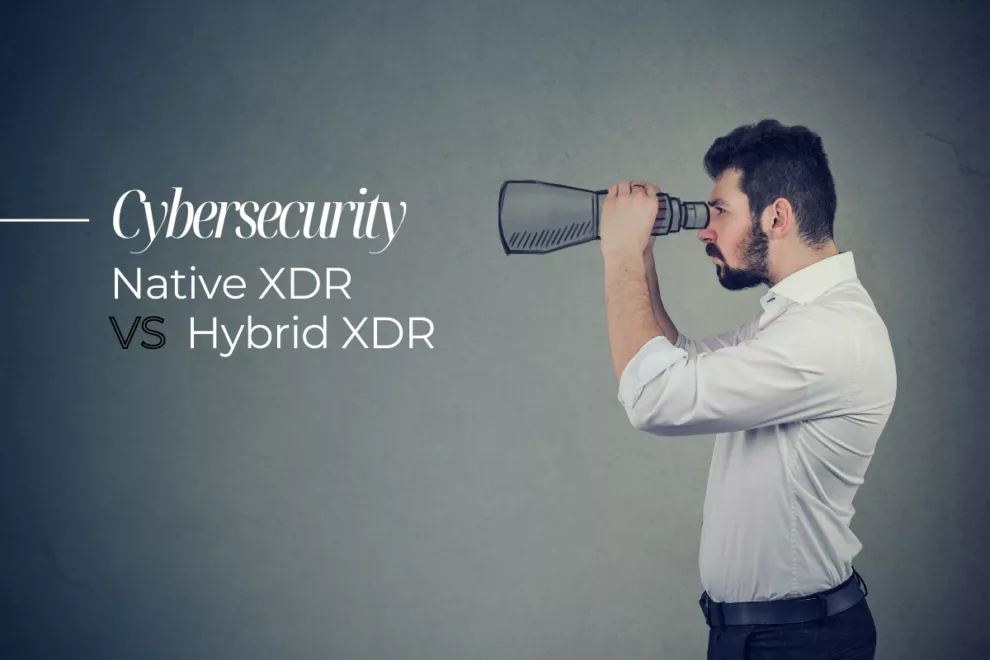We believe this company will be at the forefront of the next Internet revolution as it shapes the future of digital media and entertainment.
_
Native XDR VS Hybrid XDR: How to choose?

“
Let’s recall the clash between AOL and the open Internet in the early 2000s, which marked a crucial turning point in the evolution of the digital world. On one side, there was a closed ecosystem offering a controlled, reassuring, and streamlined experience for users; on the other, an open Internet advocating innovation and unrestricted freedom. AOL’s closed model, while perfectly integrated, limited innovation to the company’s priorities regarding features to develop or allow on its platform. In contrast, the open Internet fostered decentralized innovation, where anyone could freely create new services and technologies tailored to their own needs.
In today’s context, a similar debate emerges between two major approaches in the field of cybersecurity: Native XDR and Hybrid XDR. While each offers distinct advantages, choosing between the two can be a significant challenge. Let’s delve into this informative debate together to help you make informed decisions regarding the security of your information system.
What is XDR (Extended Detection and Response)?
XDR, originally standing for Extended Detection and Response, is a principle based on integrating multiple tools to create a comprehensive platform to be more effective in detecting and responding to threats. The XDR platform integrates continuous monitoring of IT activities, incident detection, automated response, and data correlation from multiple security sources (endpoints, servers, applications, networks, etc.). It differs from EDR (Endpoint Detection and Response) by its broader scope. It provides a holistic approach to strengthen a company’s overall security posture.
Over the years, editors have transformed this concept into a complete solution known as Native XDR and Hybrid XDR, sometimes also referred to as Closed XDR and Open XDR. But before choosing the approach that best suits your organization, it is preferable to understand the differences between the two.
Native XDR vs Hybrid XDR
Native XDR, the all-in-one solution
Native XDR is an all-in-one solution. This means that the vendor of this type of solution provides its own ecosystem to ensure complete protection of its client’s overall infrastructure. The speed and simplicity of deployment are listed as major advantages of this approach. Since all components are designed to work together, it requires less coordination during deployment.
Centralized and streamlined management are also strengths of Native XDR. Security teams benefit from a single dashboard to monitor their entire information system. Likewise, they have only one solution to manage without having to worry about integrations.
However, it is challenging for this type of solution to have perfect mastery of all the components it integrates. Let’s be clear: Native XDR cannot excel in every aspect. In addition, many XDR editors have evolved from more specialised solutions, branching out to meet broader customer needs. They were not planned and engineered from the start as XDR solutions and thus they lack the specialized expertise required to cover specific types of threats.
Additionally, the level of adaptability and scalability is lower; some user needs may require the integration of external solutions that may be more effective in a particular area, but they cannot be integrated into Native XDR, which offers its own tools. The user is therefore also dependent on the capabilities, development of new features, and updates from the provider of the Native XDR solution. Native XDR is therefore inherently less flexible and innovative.
Hybrid XDR, the balance between flexibility and efficiency
A Hybrid XDR solution is a good alternative to the increasing complexity of IT environments. Unlike Native XDR, it allows integration with third-party tools, both on-premises and in the cloud, which directly connect to XDR. It thus refers to the very principle of XDR mentioned earlier, which consists of building a comprehensive platform by integrating a variety of tools that meet the specific requirements of our own organization.
Adaptability, efficiency, and detection accuracy are listed as major advantages. Indeed, by opting for a Hybrid XDR solution, the integration of complementary components is easier, considering the specific and evolving needs of your IT infrastructure. It is also possible to choose to process certain data locally for compliance or performance reasons, or conversely, in the cloud.
Furthermore, by integrating specialized components in their field of expertise, users benefit from better threat detection efficiency. The coverage of the attack surface is optimized with a more comprehensive visibility of your IT environment, thereby reducing blind spots.
However, opting for a Hybrid XDR solution entails more complex IT security management, notably due to the need to coordinate security policies between on-premises and cloud environments. Deployment is also reputed to be slower as it is necessary to synchronize different components with each other. In addition, the Hybrid XDR solution may be slightly less effective in perfectly correlating elements from various solutions that have not necessarily been designed to work together.
Finally, cost considerations must also be considered, which may potentially be higher upfront, but remain lower in terms of overall cost than Native XDR.
And where does Custocy fit into all of this?
Custocy is not an XDR. Custocy is a Network Detection & Response (NDR). As a complementary component to EDR (Endpoint Detection & Response), it ensures comprehensive monitoring of companies’ IT networks by leveraging the power of artificial intelligence. Custocy can be used either independently or integrated into an existing environment, thus enabling precise detection of sophisticated (APT) and unknown (ZERO-DAY) threats that lurk within your network.
A NDR solution is therefore a source of context for an XD, whether it be native or hybrid. Indeed, given that all malicious activities inevitably pass through the network at some point, implementing a NDR solution becomes essential to ensure comprehensive monitoring of your information system.
If you opt for a Hybrid XDR platform, it is therefore entirely possible to integrate Custocy NDR functionalities to enhance the overall security of your organization.
In conclusion, how to make your choice?
Native XDR offers an integrated solution with streamlined management; Hybrid XDR provides a flexible and adaptable response to the complex challenges and constant changes in your IT environment.
Choosing between Native XDR and Hybrid XDR depends on many factors specific to each organization, such as the size, nature, and complexity of the infrastructure, sector regulations, or risk tolerance. A Native XDR approach may be more suitable for organizations seeking simplicity of management and immediate response with minimal effort, while a Hybrid XDR approach may be more suitable for companies with evolving needs and diversified environments looking to implement cutting-edge solutions.
Ultimately, there is no right or wrong choice between these two approaches; it should ultimately be based on a careful evaluation of each company’s specific security needs while staying at the forefront of cybersecurity developments.
Curious to discover our NDR solution? Book your demo slot, it’s 100% free! 👉HERE.
